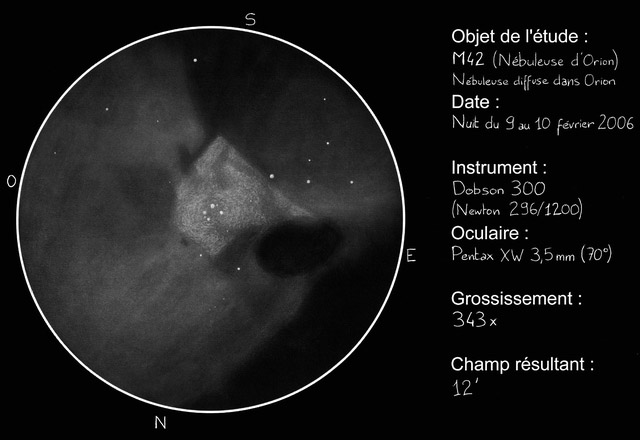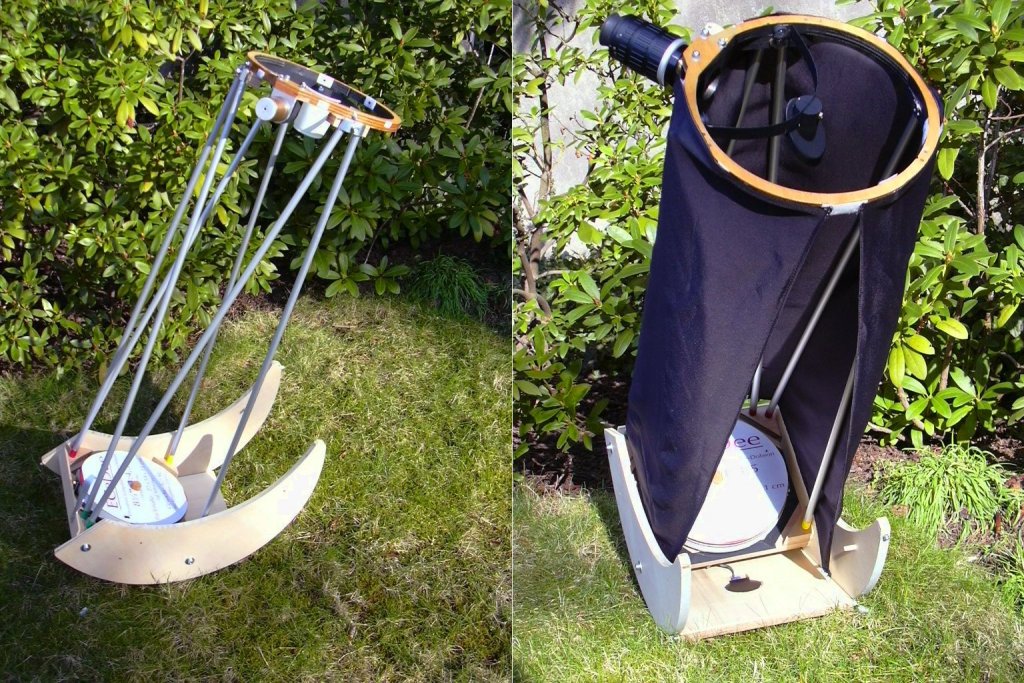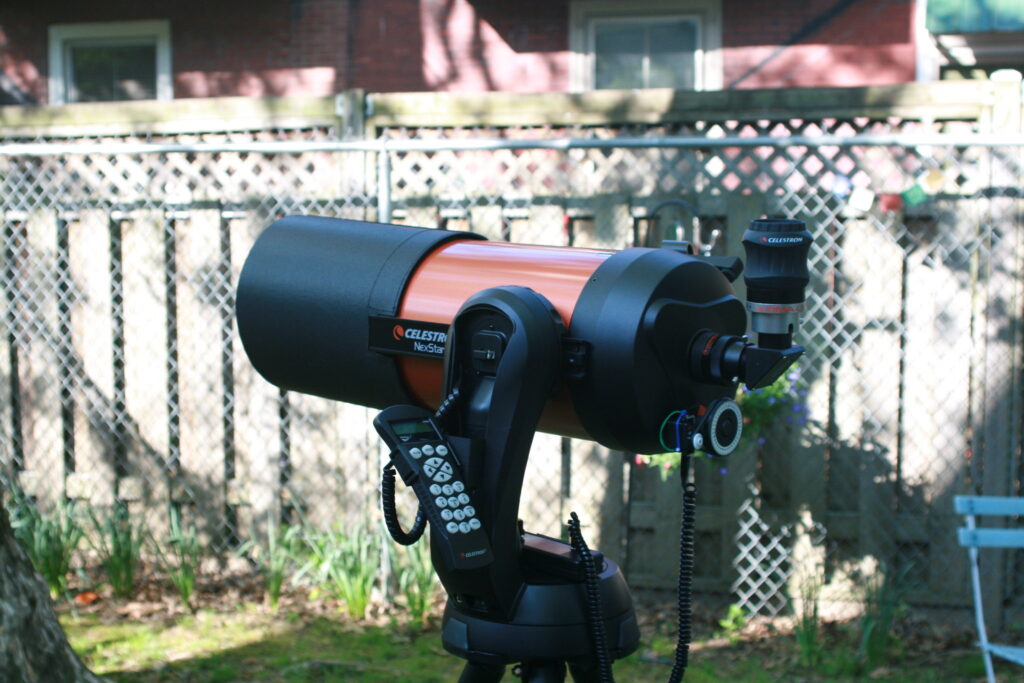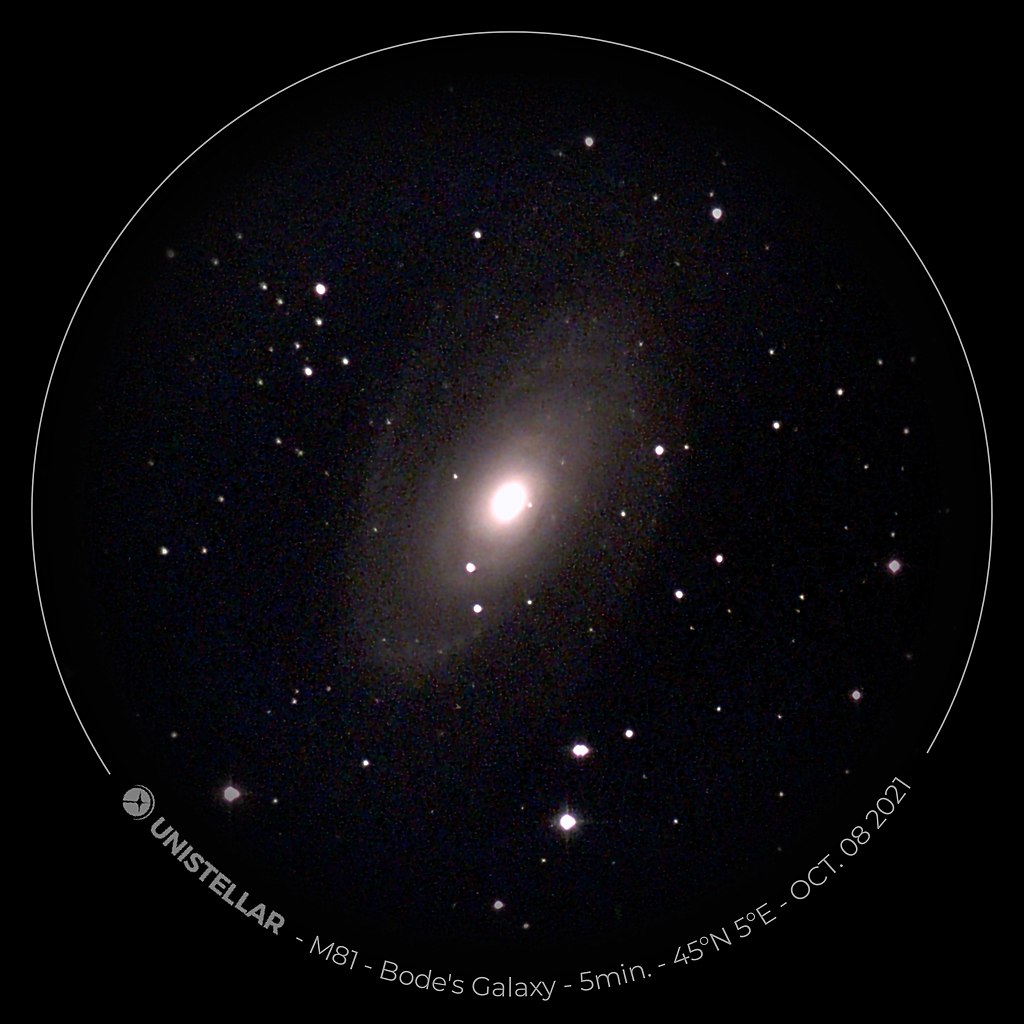“The sky is the limit”: in this budget category we find both dobsonian telescopes with an enormous light-gathering capacity and telescopes that are equipped with computerised control to automatically find and track your observation targets. This is an article in a series about the best telescopes for every budget.
[ez-toc]
What to expect?
You have to make a choice in this category. Do you want a fairly large aperture, which allows you to observe (many) more objects and see considerably more details, or do you opt for convenience and purchase a telescope with a slightly smaller diameter, but one that assists you with finding and keeping your observational targets in view – and, moreover, is often easier to transport.
With telescopes in this category, you’ll never run out of targets to observe. Countless galaxies, nebulae, and star clusters are within reach, and on planets, you can see fine details, such as swirling cloud bands on Jupiter and surface details on Mars. With the largest telescopes in this category, some globular clusters can be resolved almost to the centre: thousands of stars twinkle back at you. An indescribably beautiful sight!

Dobsonian telescopes
As indicated in other price categories of this series: a dobsonian telescope gives you the most ‘bang’ (aperture) for your ‘buck’ (price). A dobsonian, also known as dobson or dob, consists of a Newtonian reflector mounted on a sturdy but simple mount. They are extremely popular among amateur astronomers due to their favorable price-quality ratio.
Dobsonians are extremely popular among amateur astronomers due to their favorable price-quality ratio.
Under €1,000 or $1,000, you can acquire dobsonians with an aperture up to 10 inches (254 mm). Above that, there’s really no limit: the largest telescopes in Waddensky’s selection have an aperture of a whopping 16 inches (406 mm). Apertures like these enable you to observe a great deal of detail and make many more objects visible than with smaller telescopes. Read on to find out if this type of telescope is right for you or take an immediate look at Waddensky’s choice!
What to look for when purchasing?
There are two types of dobsonians in this category. On one hand, there are dobsons with a solid tube, and on the other hand, those that can be collapsed (FlexTube) or disassembled (truss). The latter category is more compact for transport and storage, but assembling a truss dobsonian always takes some extra time. A solid tube is quick and simple to set up, but it takes a while to cool down properly, and the telescope takes up a lot of space during transport and storage.
A 16 inch dobsonian sounds like a dream and it indeed is, but they are gigantic scopes with considerable weight.
When making a choice, pay attention to the weight and size of a telescope. A 16 inch dobsonian sounds like a dream, and it certainly is, but these are massive scopes with a significant weight. So make sure you either have a fixed setup for your telescope, perhaps in your own observatory, or that you are capable of lifting and transporting the parts of the telescope properly. A dream telescope that collects dust because it’s too much trouble to use is a waste of money.

Some of the telescopes mentioned below are equipped with a GoTo system. This helps you find and keep your observation targets in view. They thus form a special intermediate category between the manually operated dobsonians and the computerized telescopes that I will discuss later in this article.
Waddensky’s choice
Europe
- GSO N 300/1500 DOB Deluxe
- Sky-Watcher N 305/1500 Skyliner FlexTube
- GSO N 406/1829 Truss
- Sky-Watcher N 406/1800 Skyliner FlexTube
With GoTo:
- Sky-Watcher N 203/1200 Skyliner FlexTube BD DOB GoTo
- Sky-Watcher N 254/1200 Skyliner FlexTube BD DOB GoTo
- Sky-Watcher N 406/1800 Skyliner FlexTube BD DOB GoTo
USA
Coming soon!
Computerised telescopes
In the lower budget categories, we already got acquainted with computerised telescopes. These telescopes help you with finding your targets and keeping them in view. This feature is known as GoTo. Below €1,000 or $1,000, telescopes of this type have a limited aperture or other points of attention. If your budget is over €1,000 or $1,000, there’s a considerably broader choice. You can buy fully automated telescopes with an aperture sufficient to observe a world of targets. A lot of fun! Read on for some points to consider when purchasing, or jump straight to Waddensky’s choice.
What to look for when purchasing?
The telescopes in this category have a catadioptric design, meaning they have a long focal length but a short tube. This is because the light path inside the telescope tube is ‘folded’. They are therefore excellently suited for use on a tripod, and one is always included in Waddensky’s choice below. The long focal length means that with the same eyepiece, they often provide higher magnification than, for example, the dobsonian telescopes mentioned above. So, if you’re looking for a telescope with a nice wide field of view, to observe large, star-rich areas for instance, then these telescopes are less suitable.
The built-in tracking motors accurately keep your observational target in view
GoTo telescopes are ideal for when you want to stargaze with a group of people. The built-in tracking motors accurately keep your observational target in view, allowing everyone enough time to observe the object without having to re-centre the telescope on the target in between, as is the case with manual telescopes. Using the hand controller or an app on your phone, you can quickly select the next target, after which the telescope automatically moves to it and starts tracking again. It really couldn’t be simpler.

One of the most well-known series of computerised telescopes is Celestron’s NexStar. Within the NexStar series, there is the SE line and the Evolution line. Both lines have the same optical instrument for the same aperture. The difference between the two lines lies mainly in the extras. For example, the Evolution has a sturdier mount, a built-in battery, and WiFi functionality. That’s why they are more expensive than telescopes from the SE line.
Waddensky’s choice
Europe
- Celestron NexStar 4SE
- Celestron NexStar 6SE
- Celestron NexStar 8SE
- Celestron NexStar Evolution 6
- Celestron NexStar Evolution 8
- Celestron NexStar Evolution 8 with StarSense
USA
Coming soon!
Special mention: “smart telescopes”
This category of telescopes is somewhat of an oddity because they are not strictly visual telescopes. You don’t look through an eyepiece, but rather at an image from the camera that is built into the telescope (as in the eVscope 2), or even directly on your smartphone (as with the eQuinox 2 and Stellina). The image is processed before it is displayed, so you can see considerably more detail and colour than visually through a telescope with a comparable aperture.

The general opinion among amateur astronomers is that these telescopes are actually quite expensive for what they offer. With a similar budget, you can purchase a fantastic astrophotography setup that produces significantly nicer images. But I mention them here anyway, because the “set up and ready to go” principle might appeal to some observers. Do your research well before you buy!
Waddensky’s choice
Europe
- Unistellar eQuinox 2 (with backpack en solar filter)
- Unistellar eVscope 2 (with backpack en solar filter)
- Vaonis Stellina
USA
Coming soon!
If you make a purchase through one of the links on this page, Waddensky receives a small compensation from the webshop for forwarding visitors. This does not change the price for you, but the compensation allows Waddensky to continue to provide you with valuable information on astronomical topics. Thanks in advance for your support!